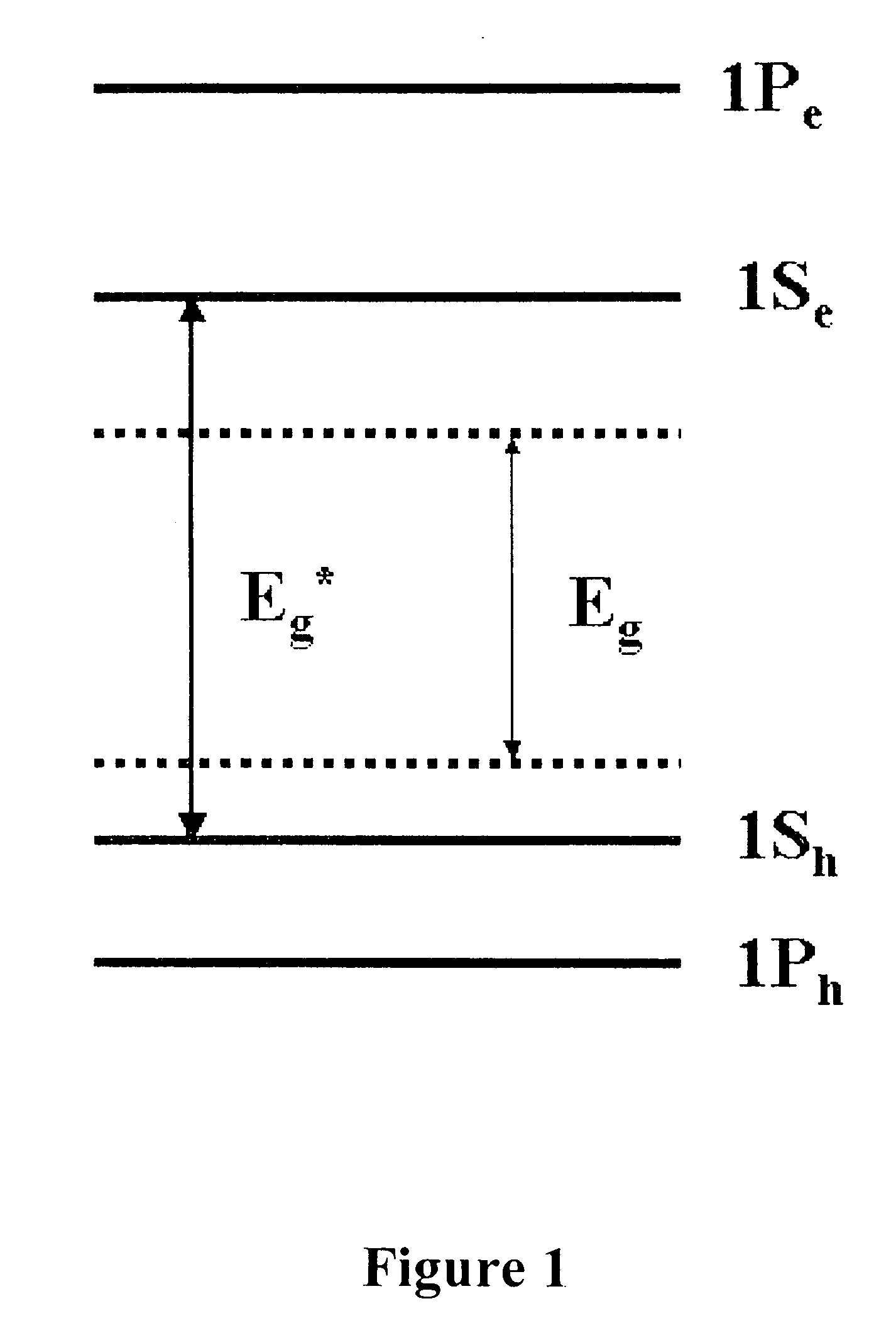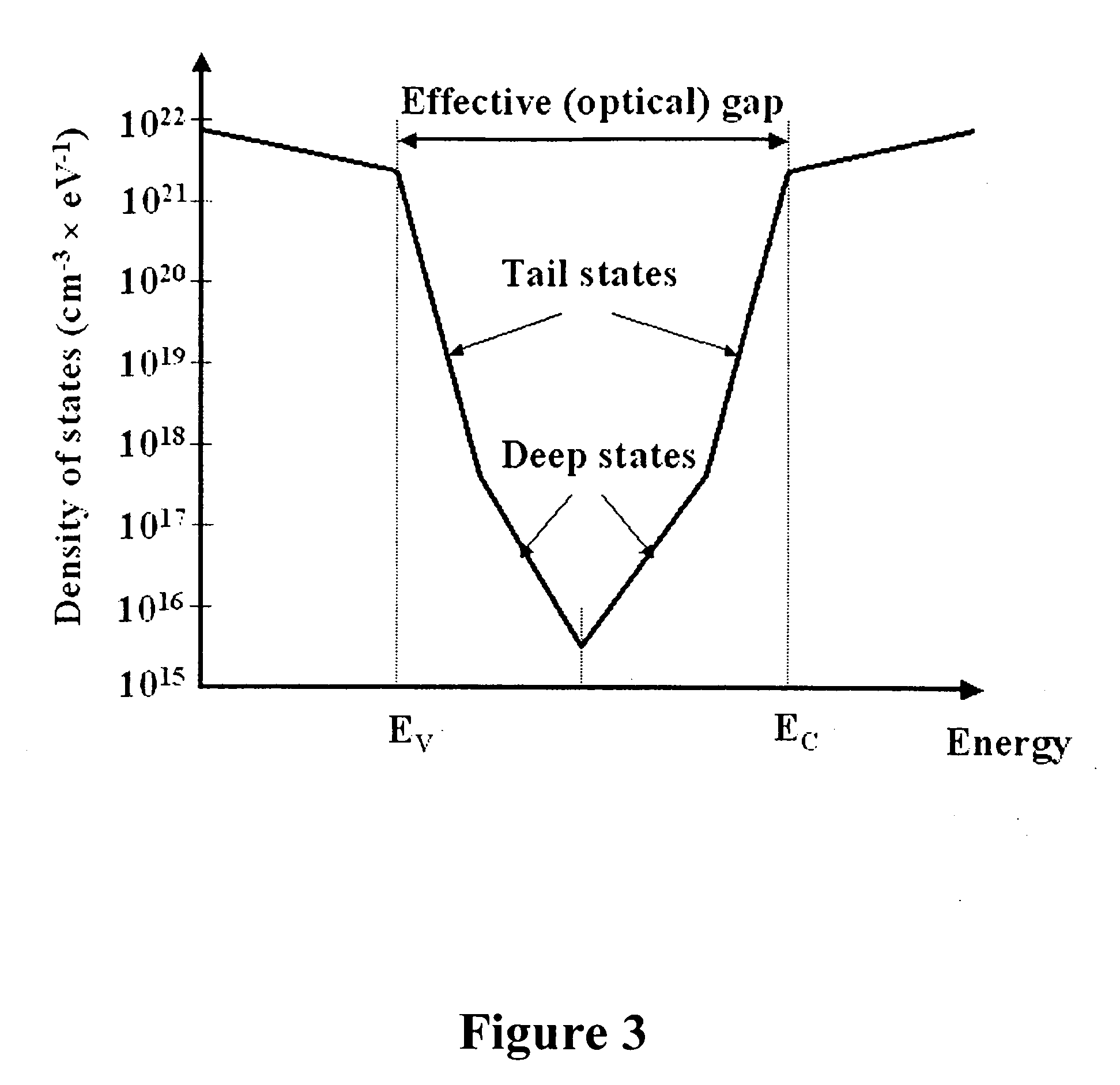Disordered silicon nanocomposites for photovoltaics, solar cells and light emitting devices
a technology of solar cells and silicon nanocomposites, applied in the direction of sustainable manufacturing/processing, climate sustainability, semiconductor devices, etc., can solve the problems of significant obstacles in the application of nanocrystals in light emitting devices (light emitting diodes and laser diodes), and achieve direct electrical injection of charge carriers into nanocrystals
- Summary
- Abstract
- Description
- Claims
- Application Information
AI Technical Summary
Benefits of technology
Problems solved by technology
Method used
Image
Examples
Embodiment Construction
[0045]The preferred embodiments are directed to nanocomposite materials and their structures for photovoltaics, photodetectors, and light emitting devices. A key element of the preferred embodiments is a p-type, i-type or n-type layer made of disordered-amorphous or microcrystalline-silicon and comprising semiconductor nanoparticles encapsulated into the disordered silicon host. The intrinsic, p-type or n-type layers of the disordered silicon comprising nanocrystals can obviously be employed in numerous layered architectures already proposed for photovoltaic materials and light emitting devices. Apart from the nanocomposite disordered silicon layers, these structures can also comprise bulk semiconductor materials, metals, and conducting polymers. That enables development of numerous layered architectures taking advantage of nanoparticles as efficient photogenerators of electron-hole pairs for photovoltaic applications and as very attractive light emitters combining size-controlled e...
PUM
| Property | Measurement | Unit |
|---|---|---|
| diameter | aaaaa | aaaaa |
| diameter | aaaaa | aaaaa |
| energy bandgap | aaaaa | aaaaa |
Abstract
Description
Claims
Application Information
 Login to View More
Login to View More - R&D
- Intellectual Property
- Life Sciences
- Materials
- Tech Scout
- Unparalleled Data Quality
- Higher Quality Content
- 60% Fewer Hallucinations
Browse by: Latest US Patents, China's latest patents, Technical Efficacy Thesaurus, Application Domain, Technology Topic, Popular Technical Reports.
© 2025 PatSnap. All rights reserved.Legal|Privacy policy|Modern Slavery Act Transparency Statement|Sitemap|About US| Contact US: help@patsnap.com



